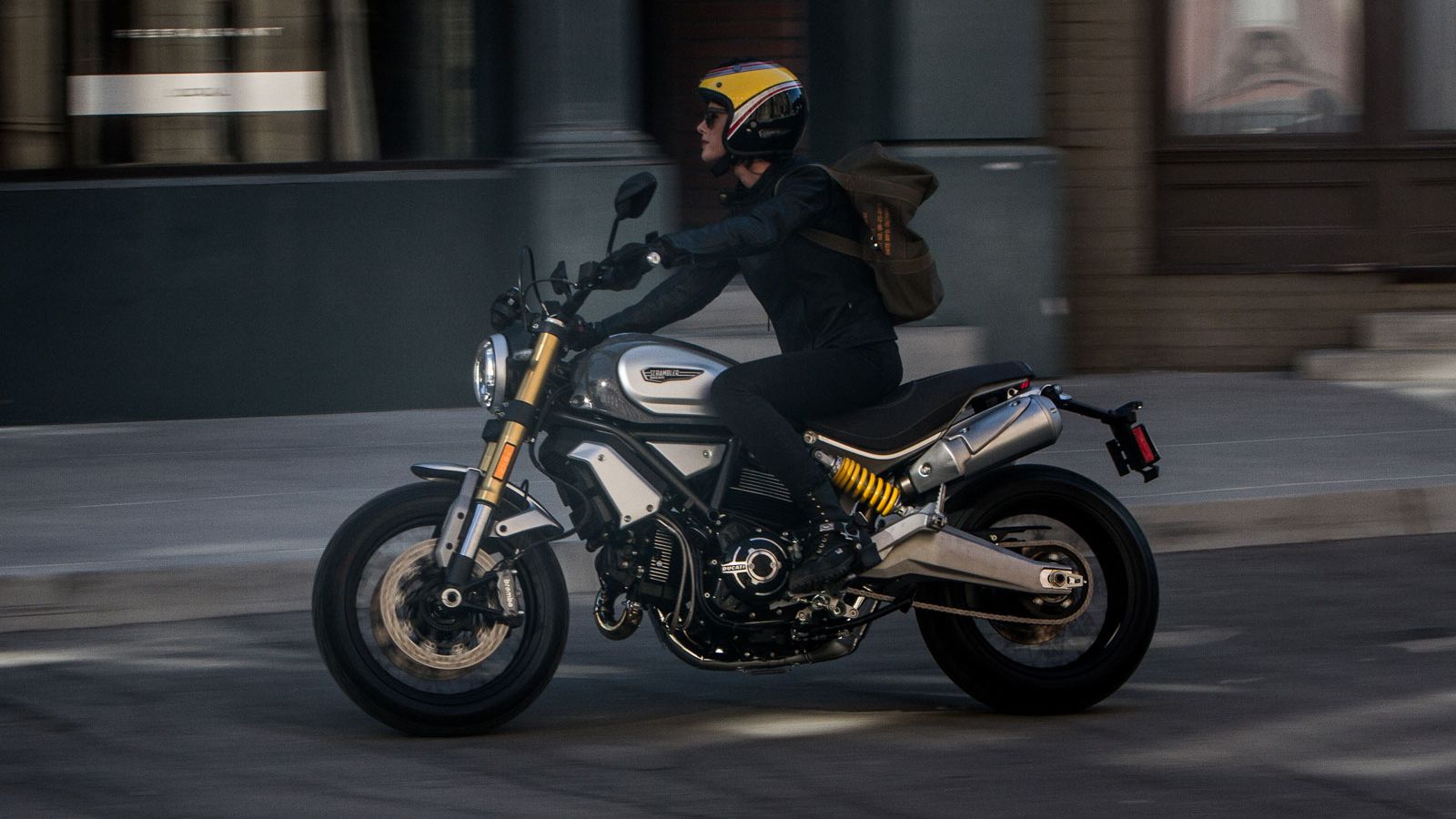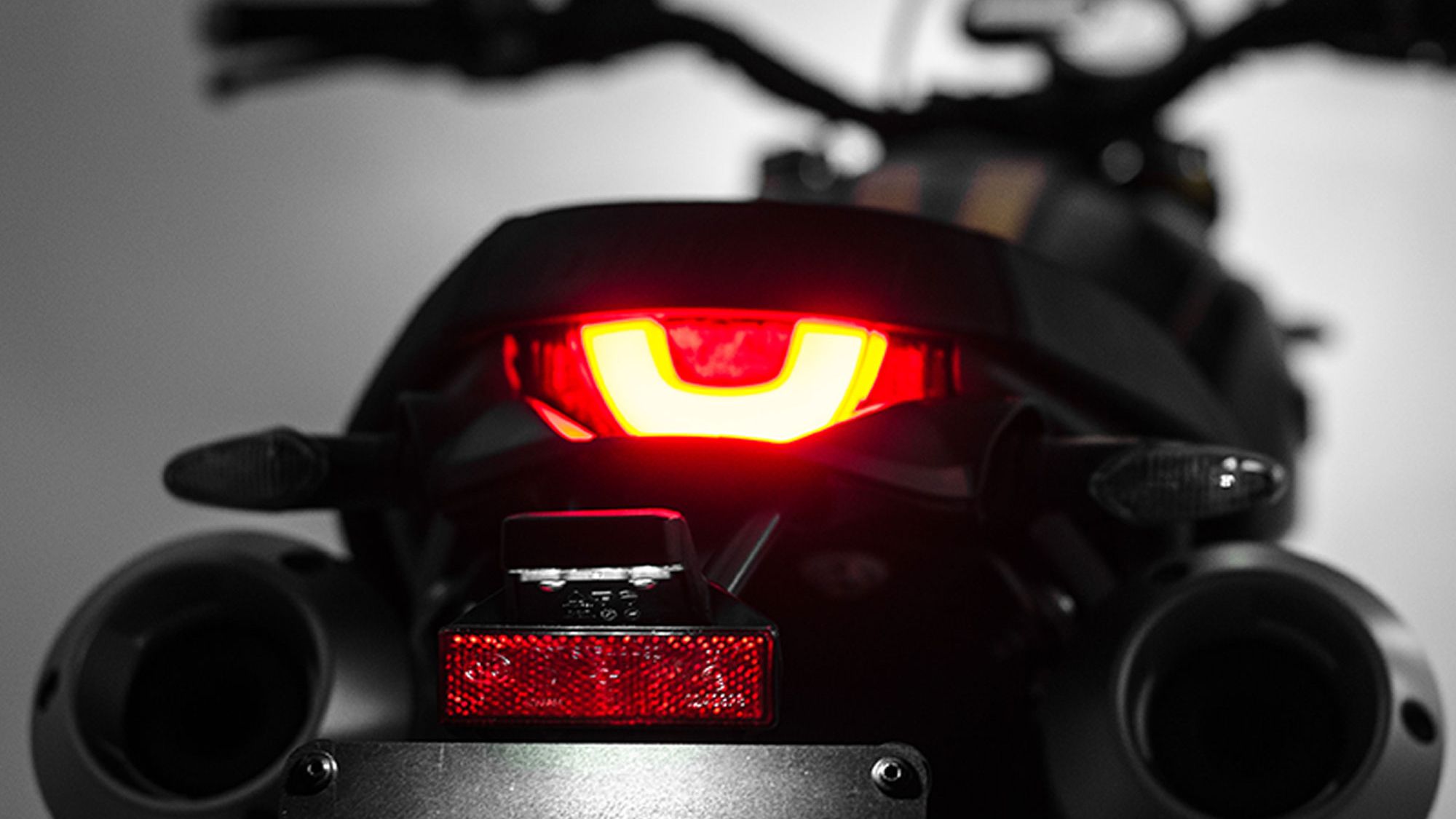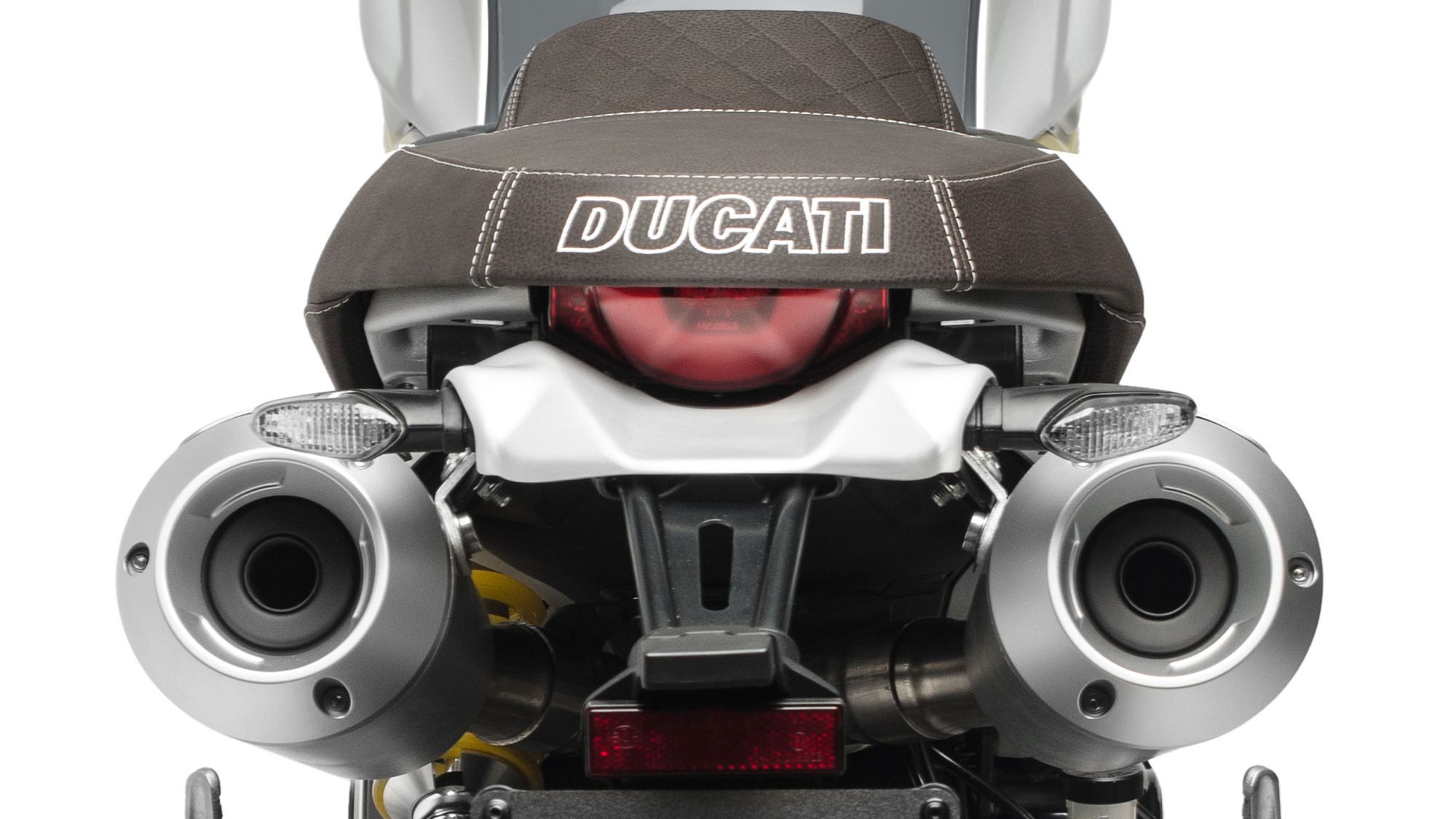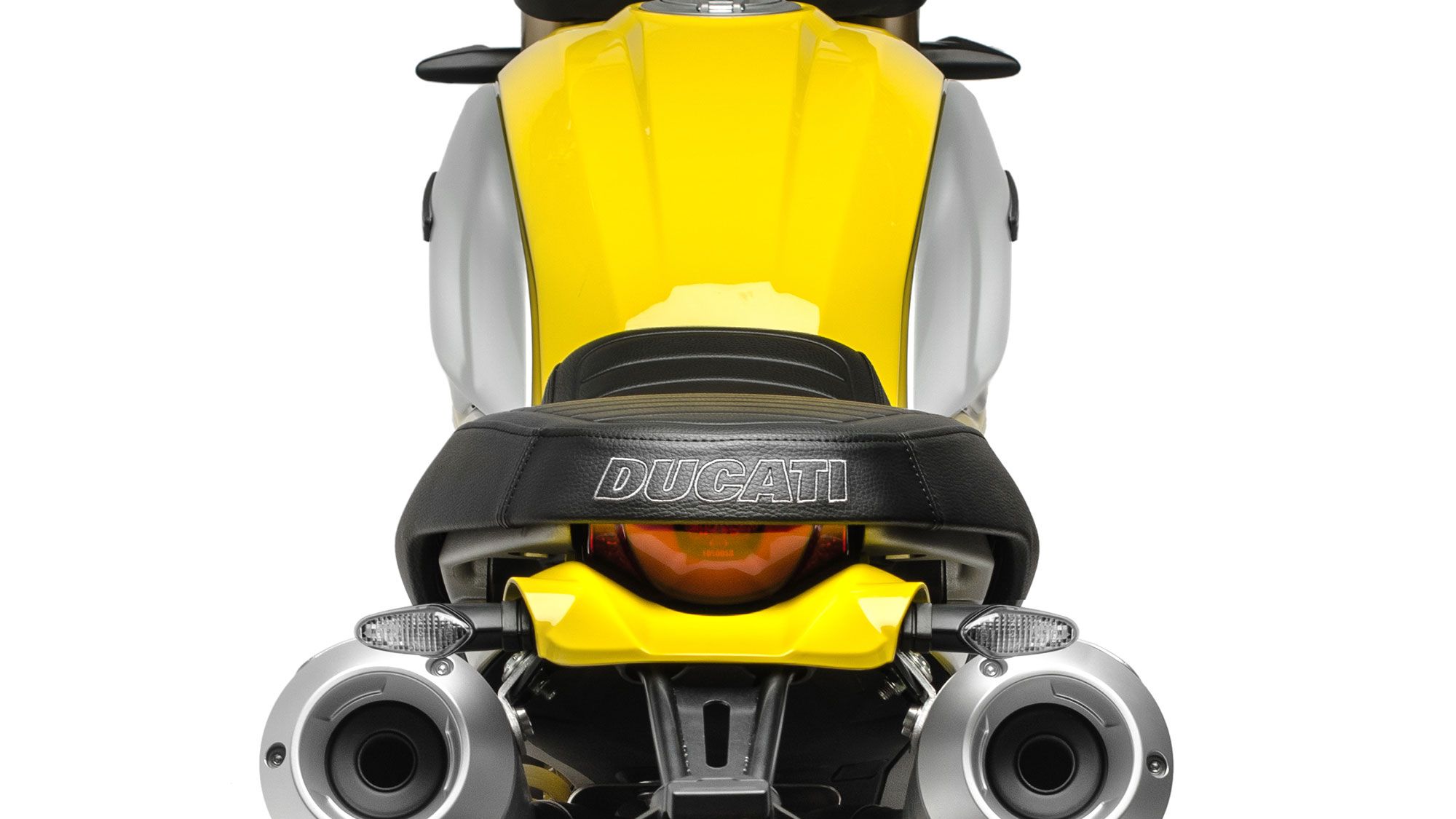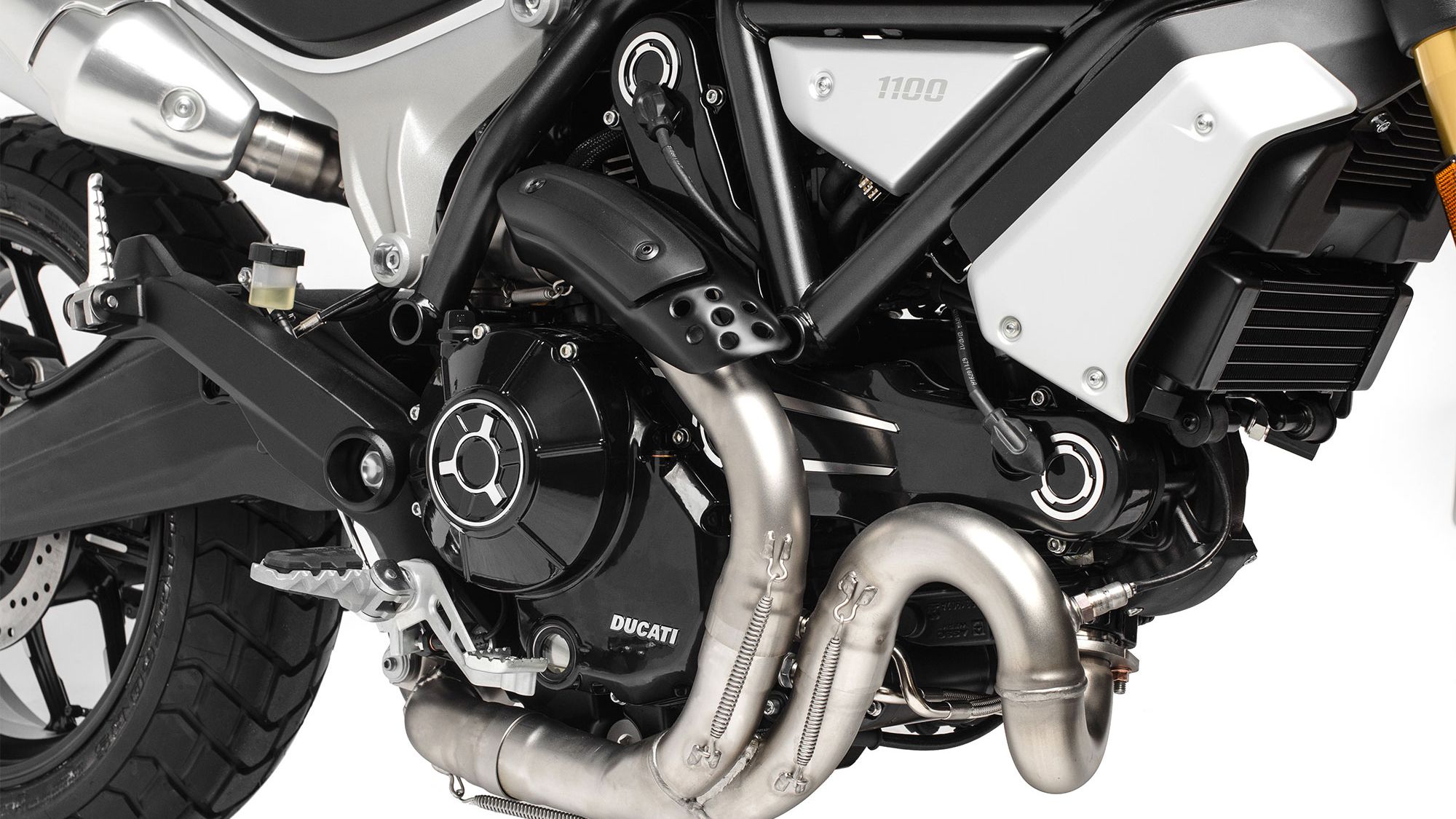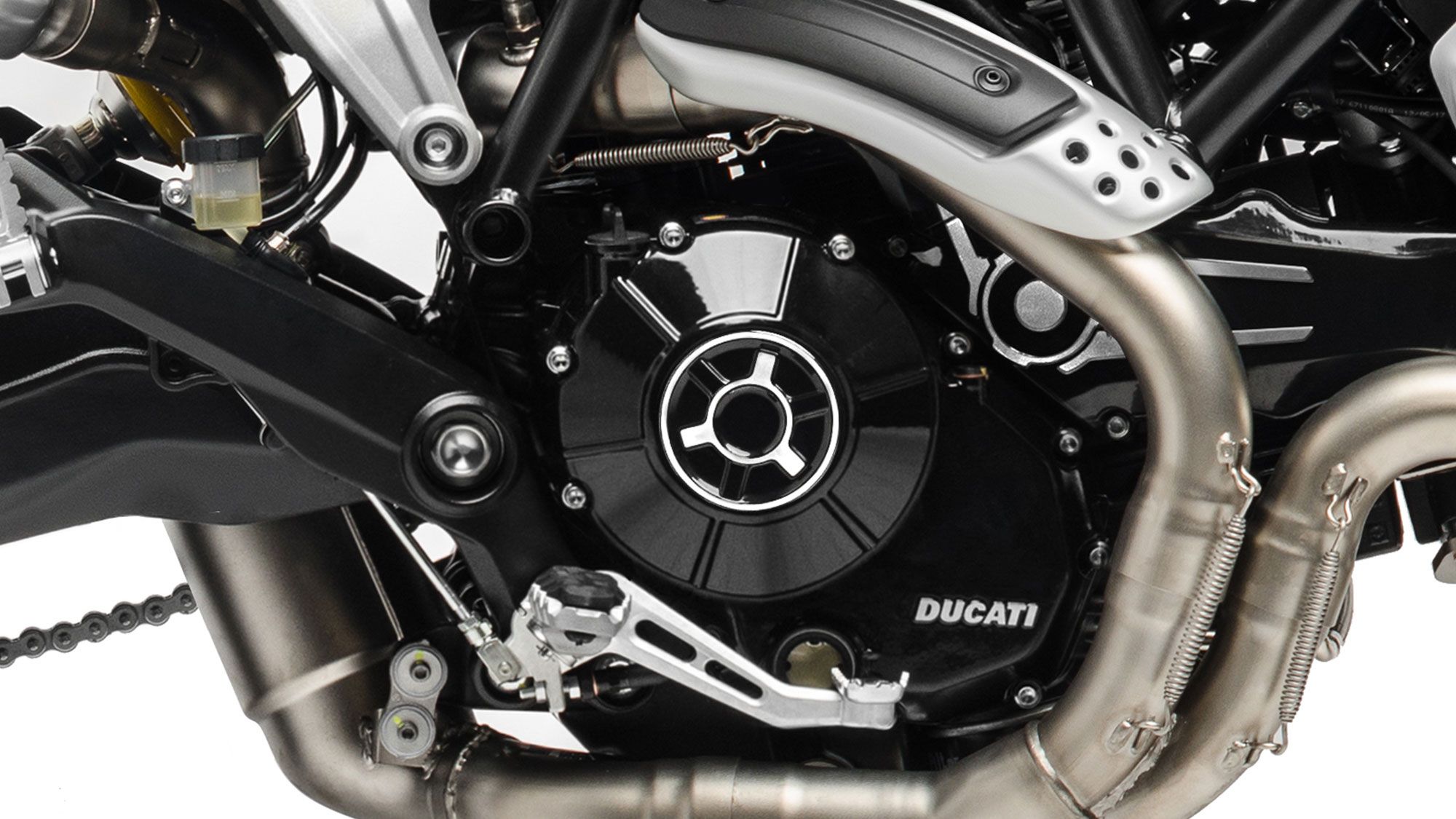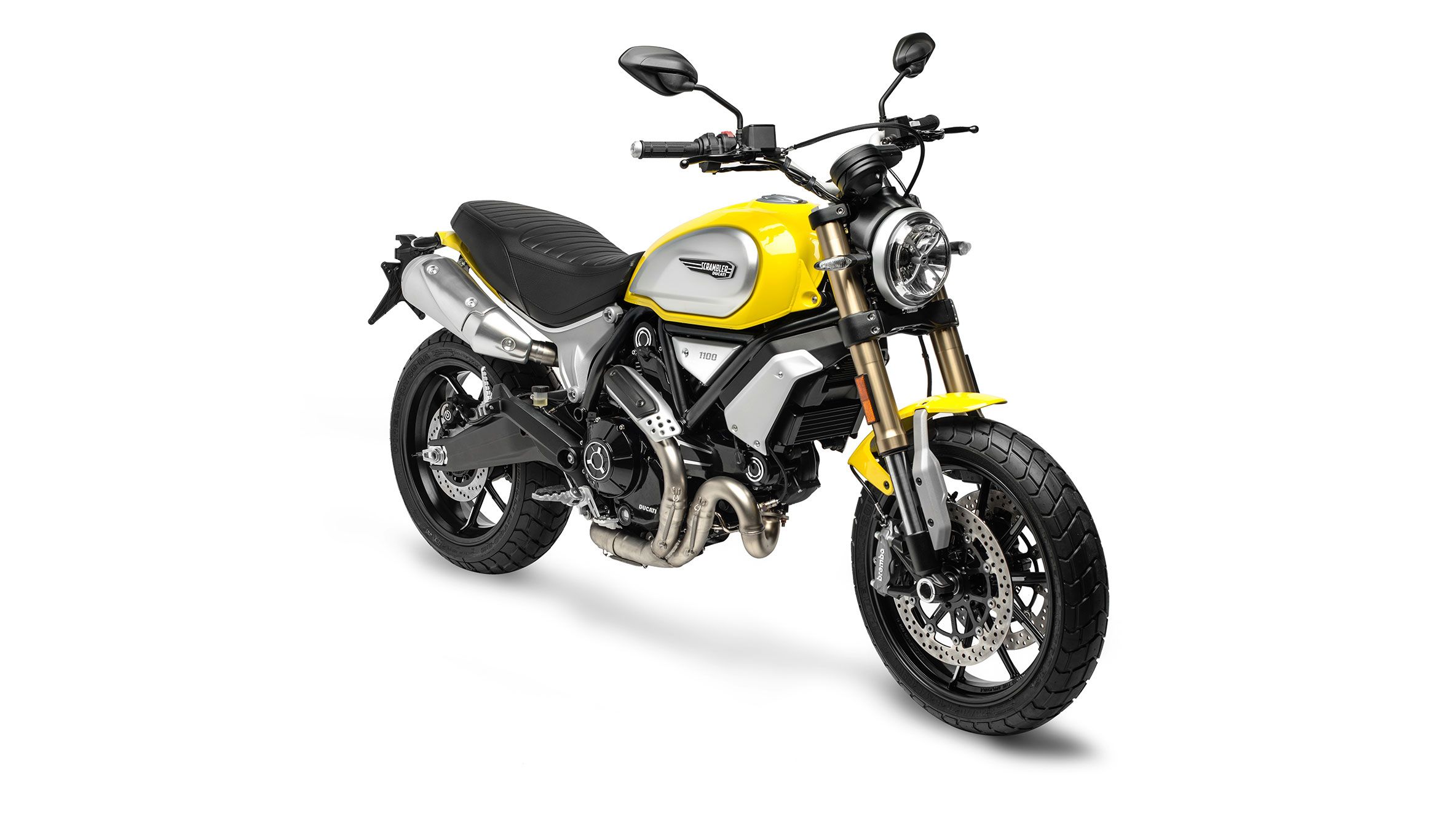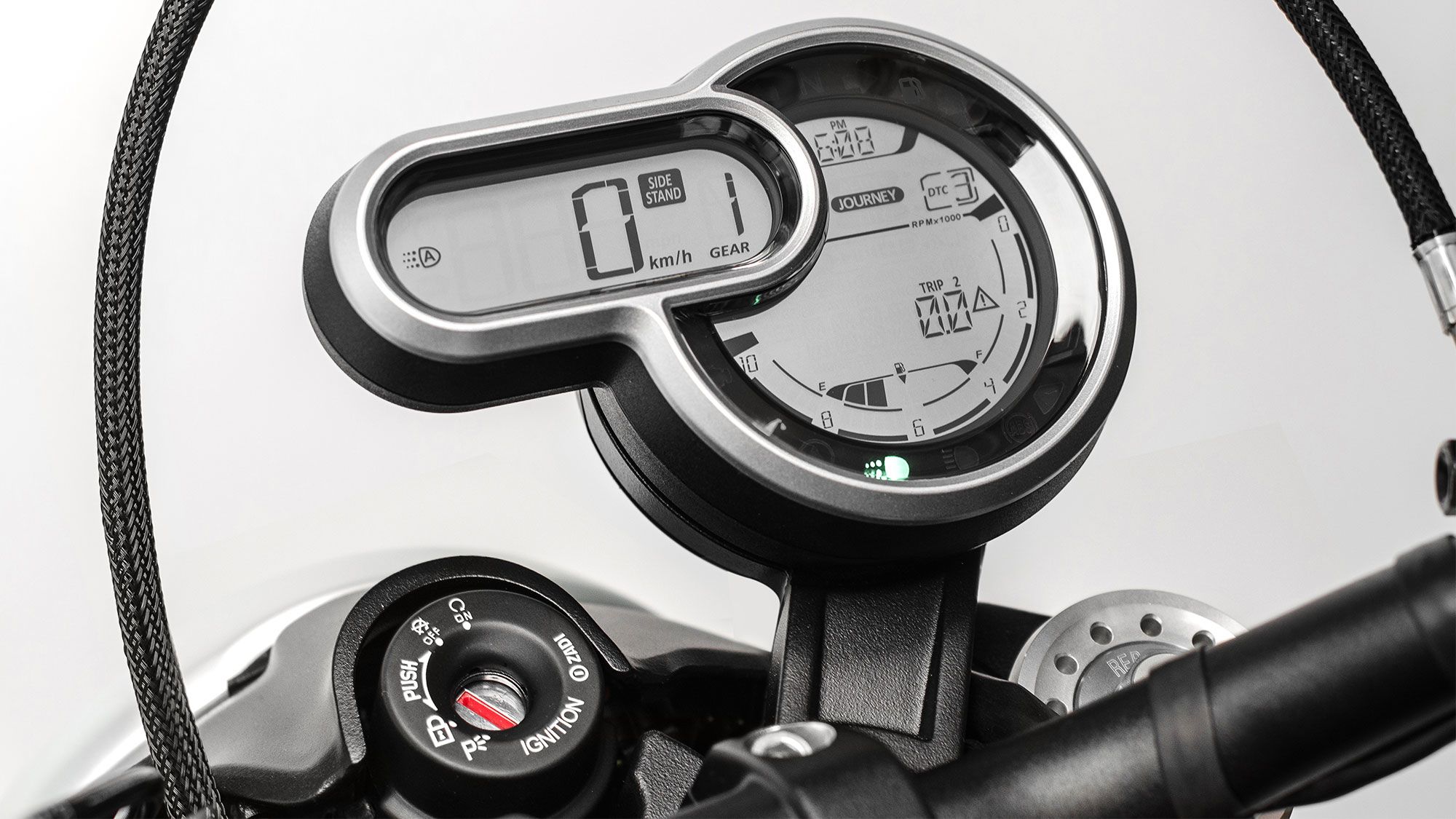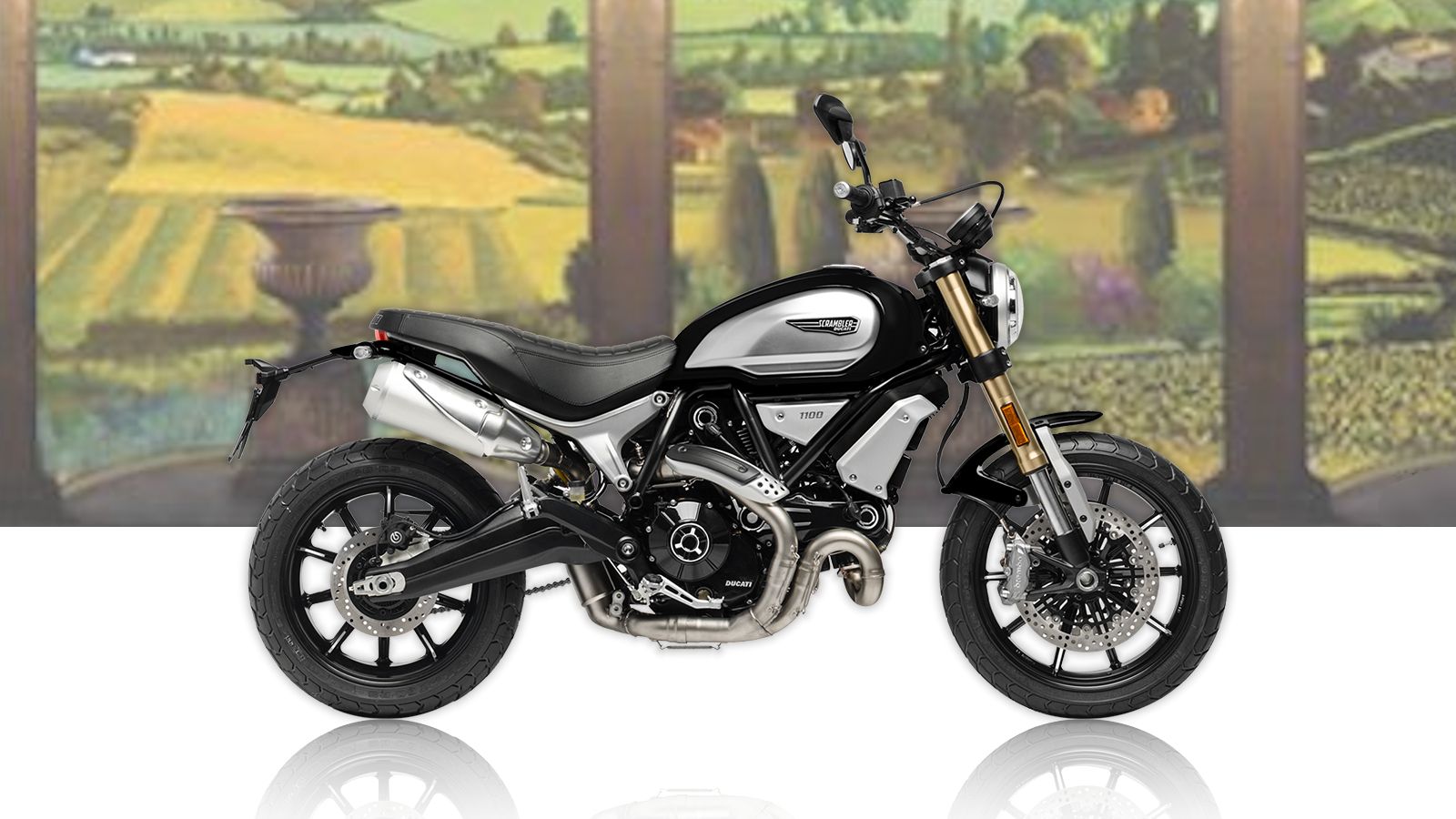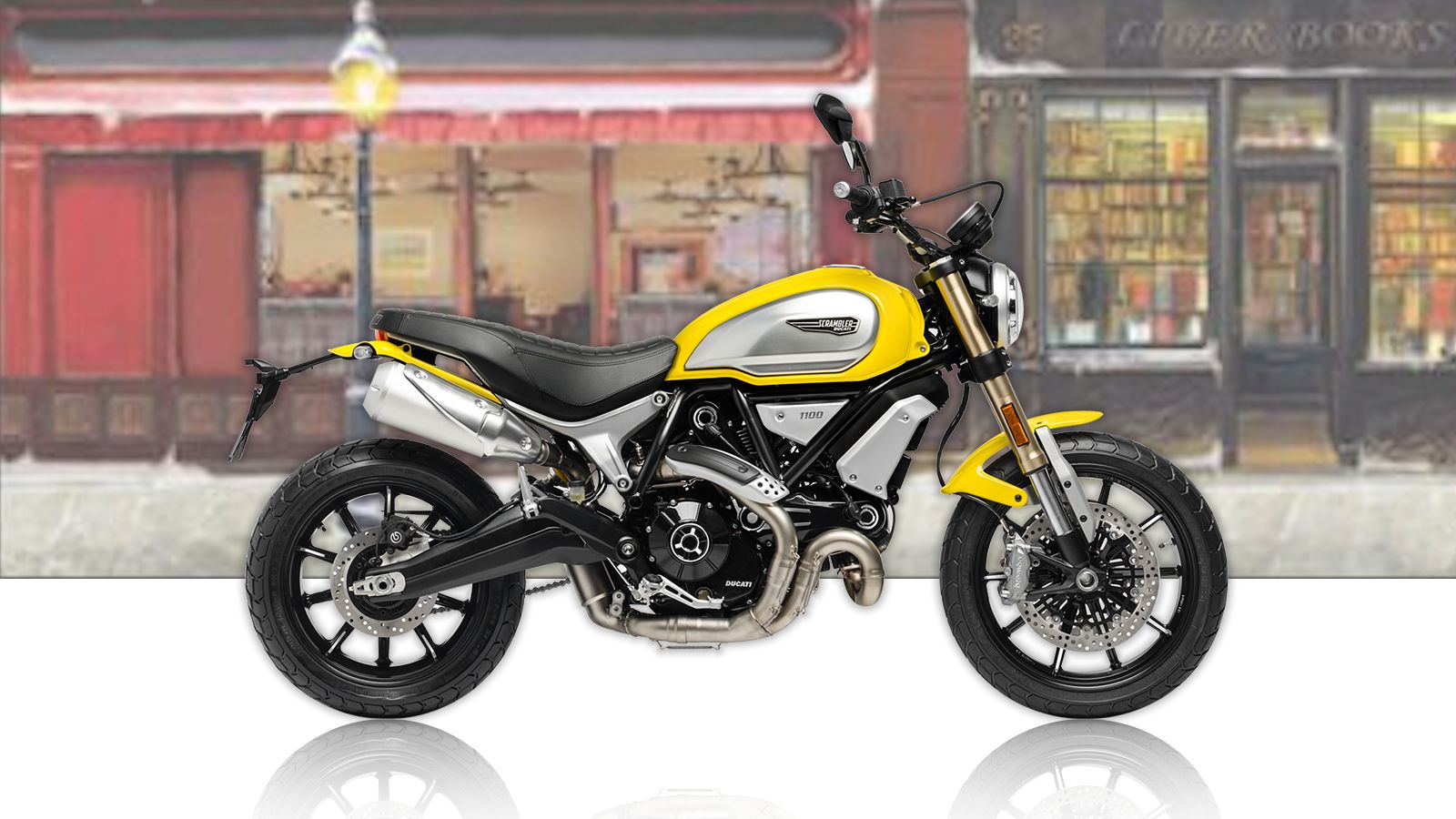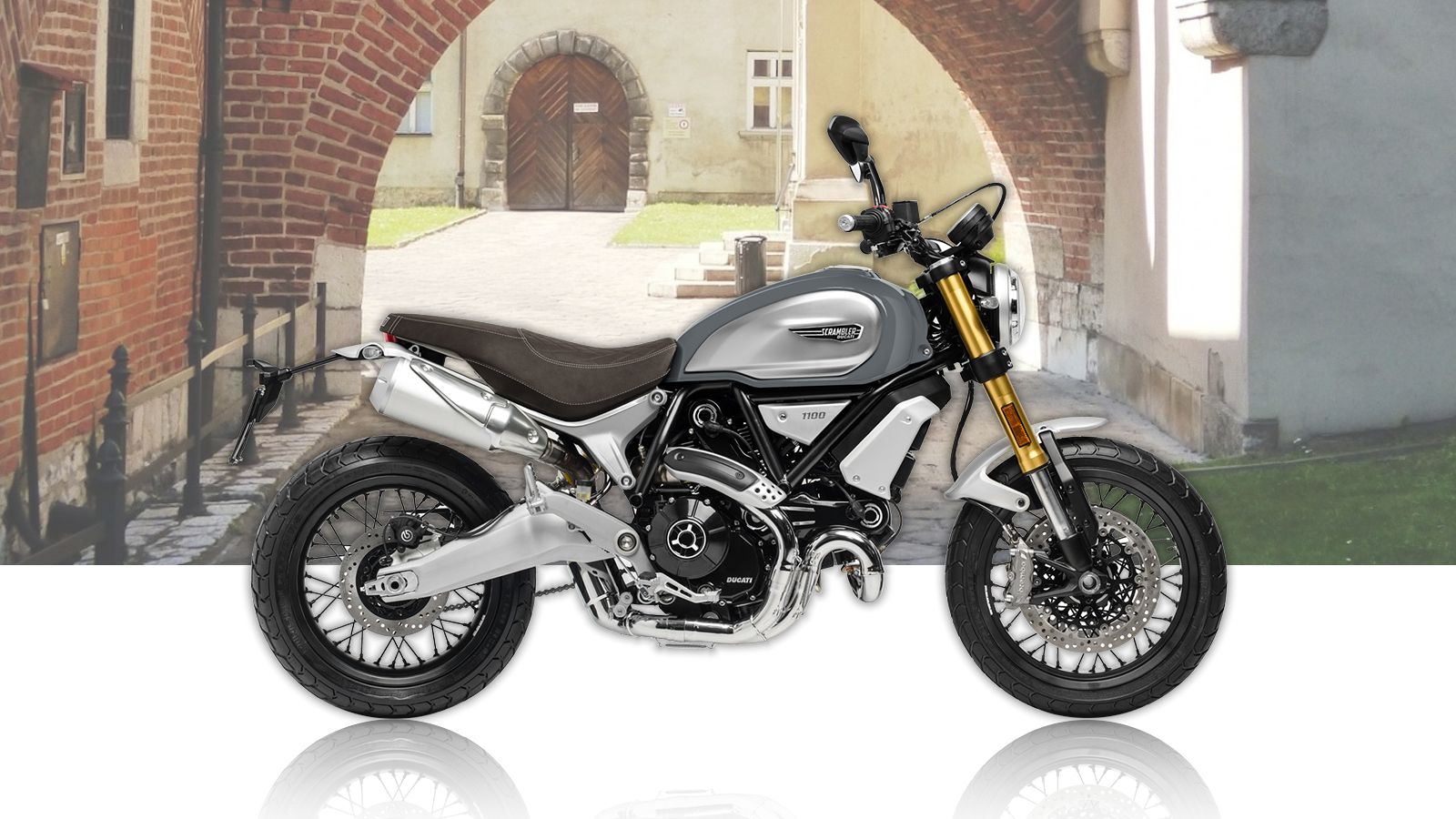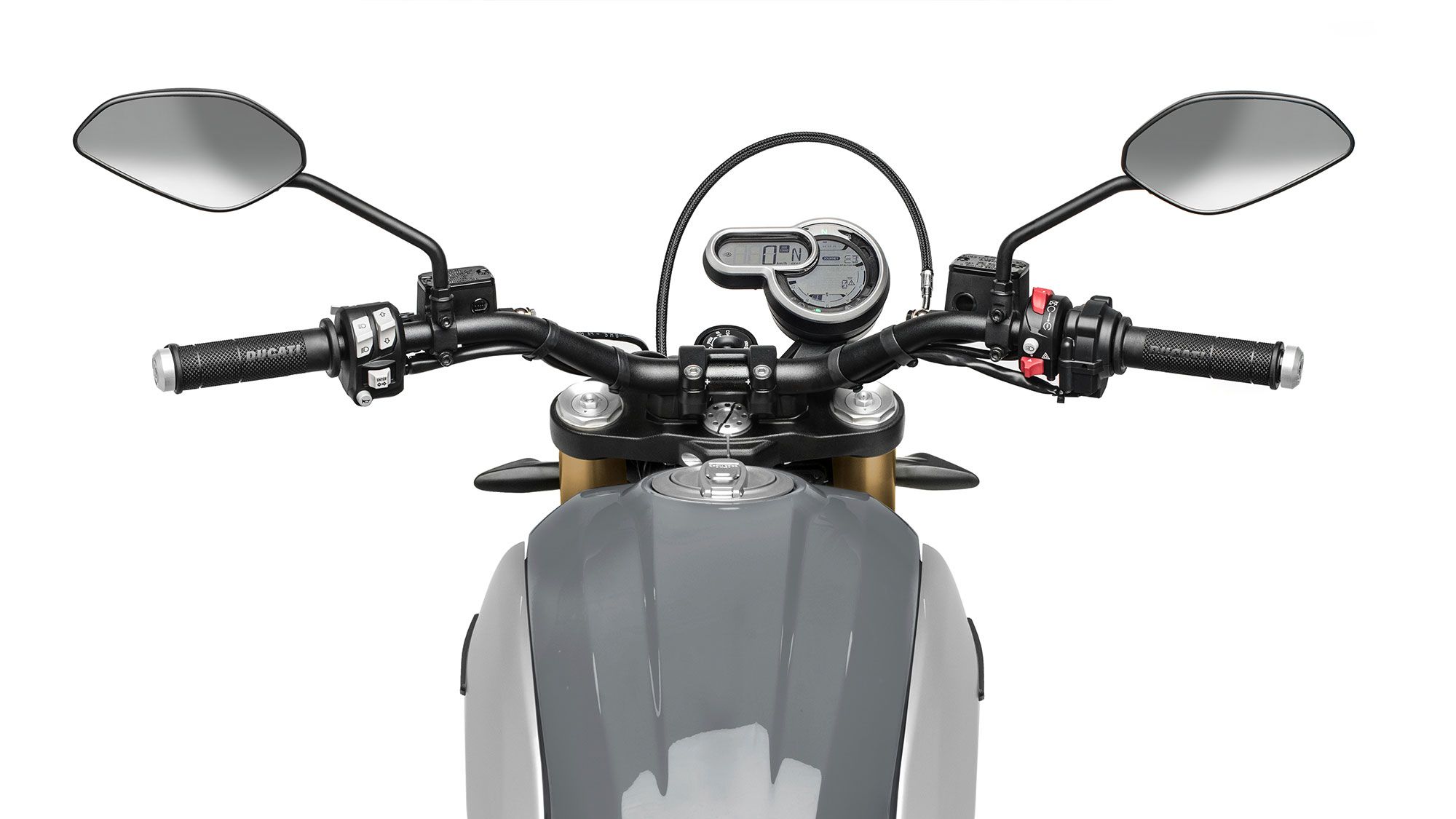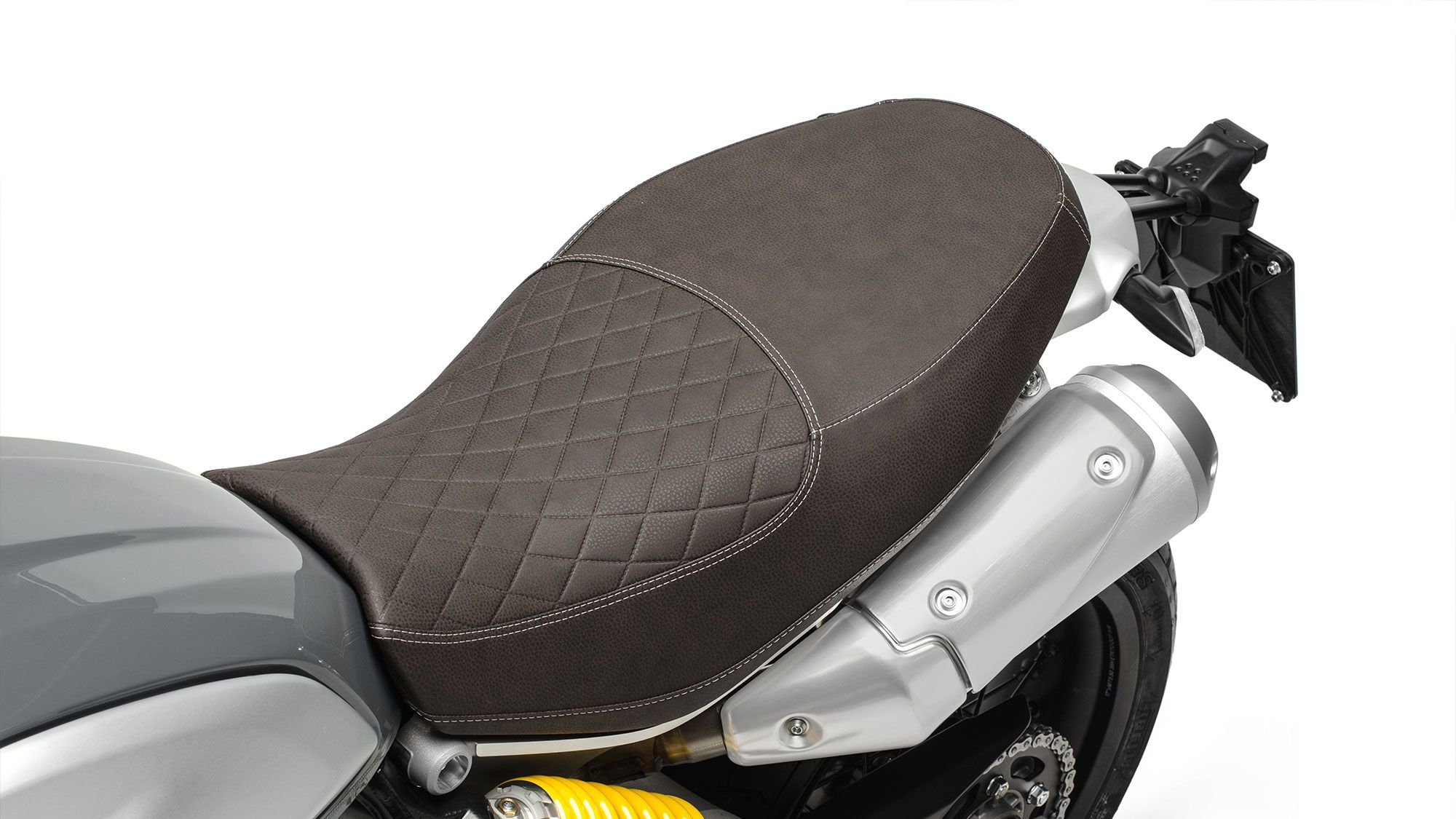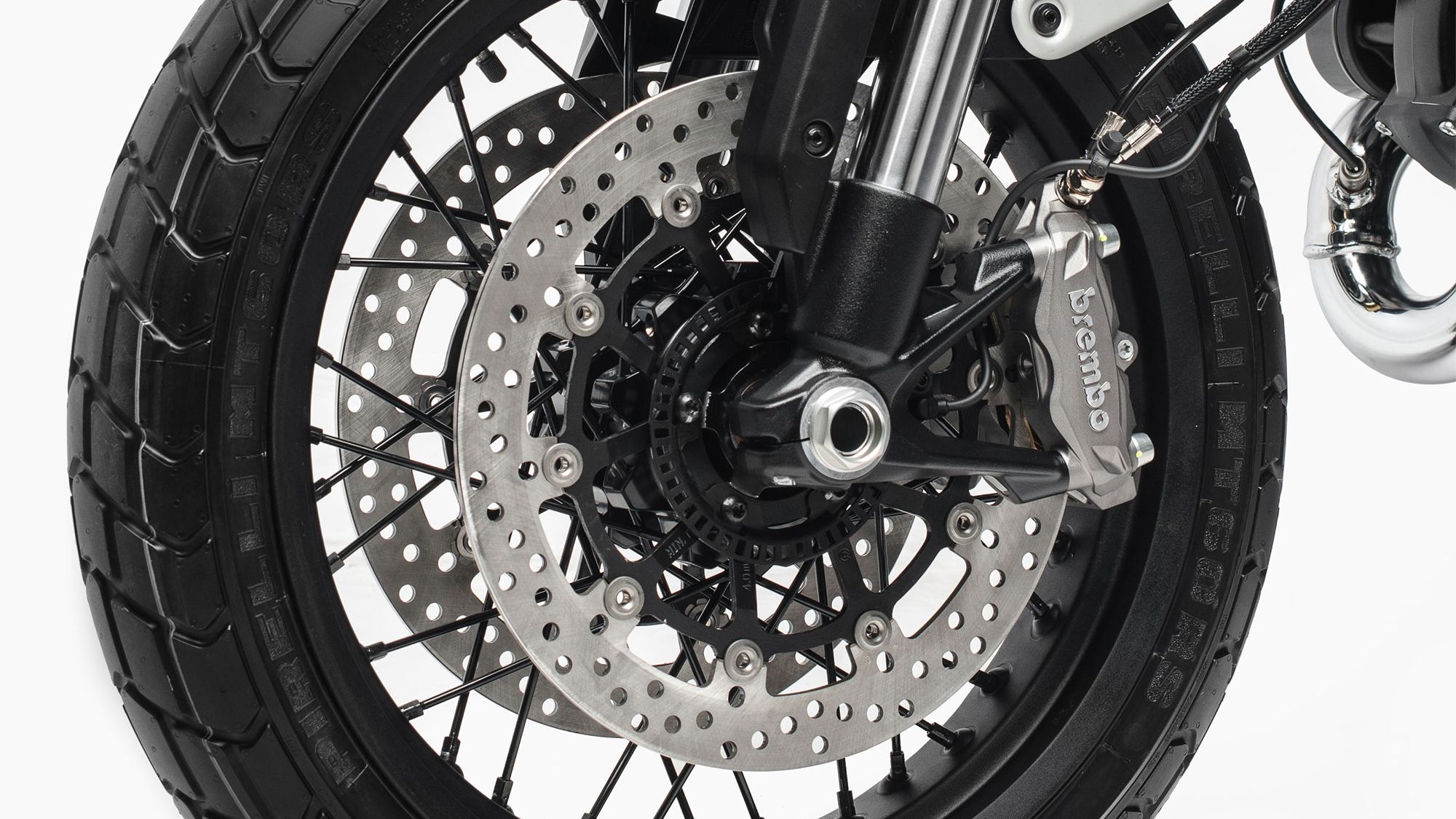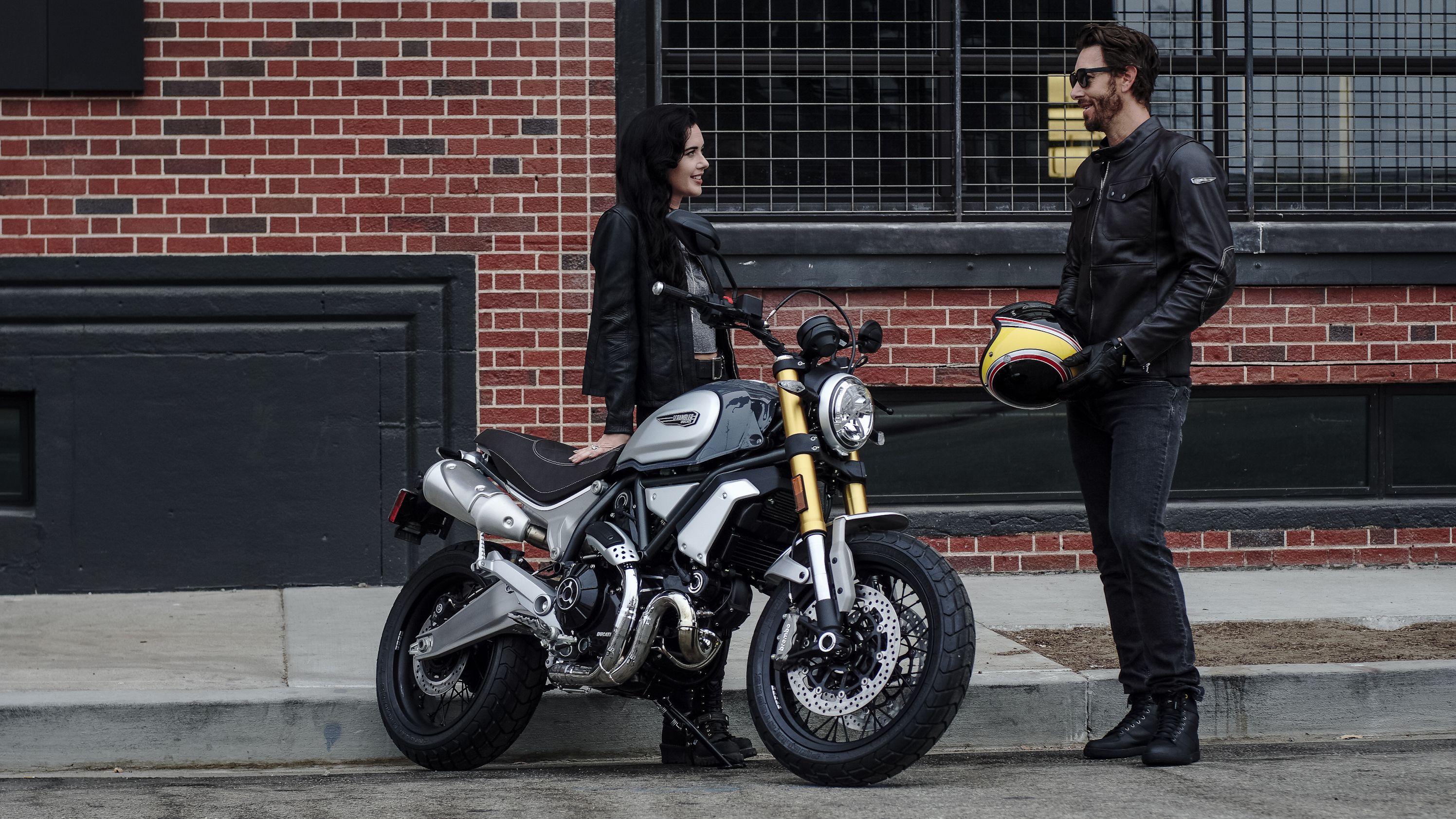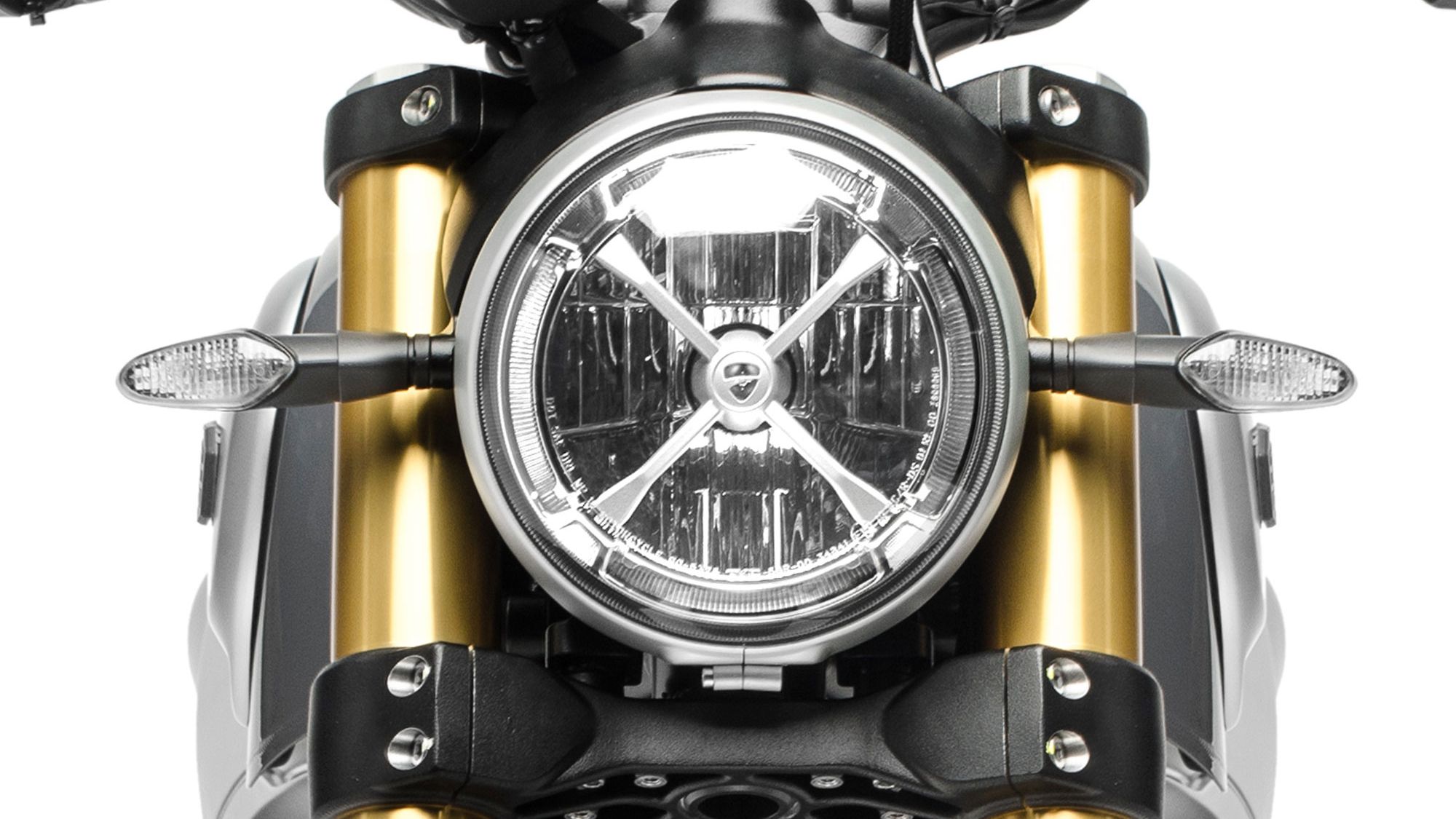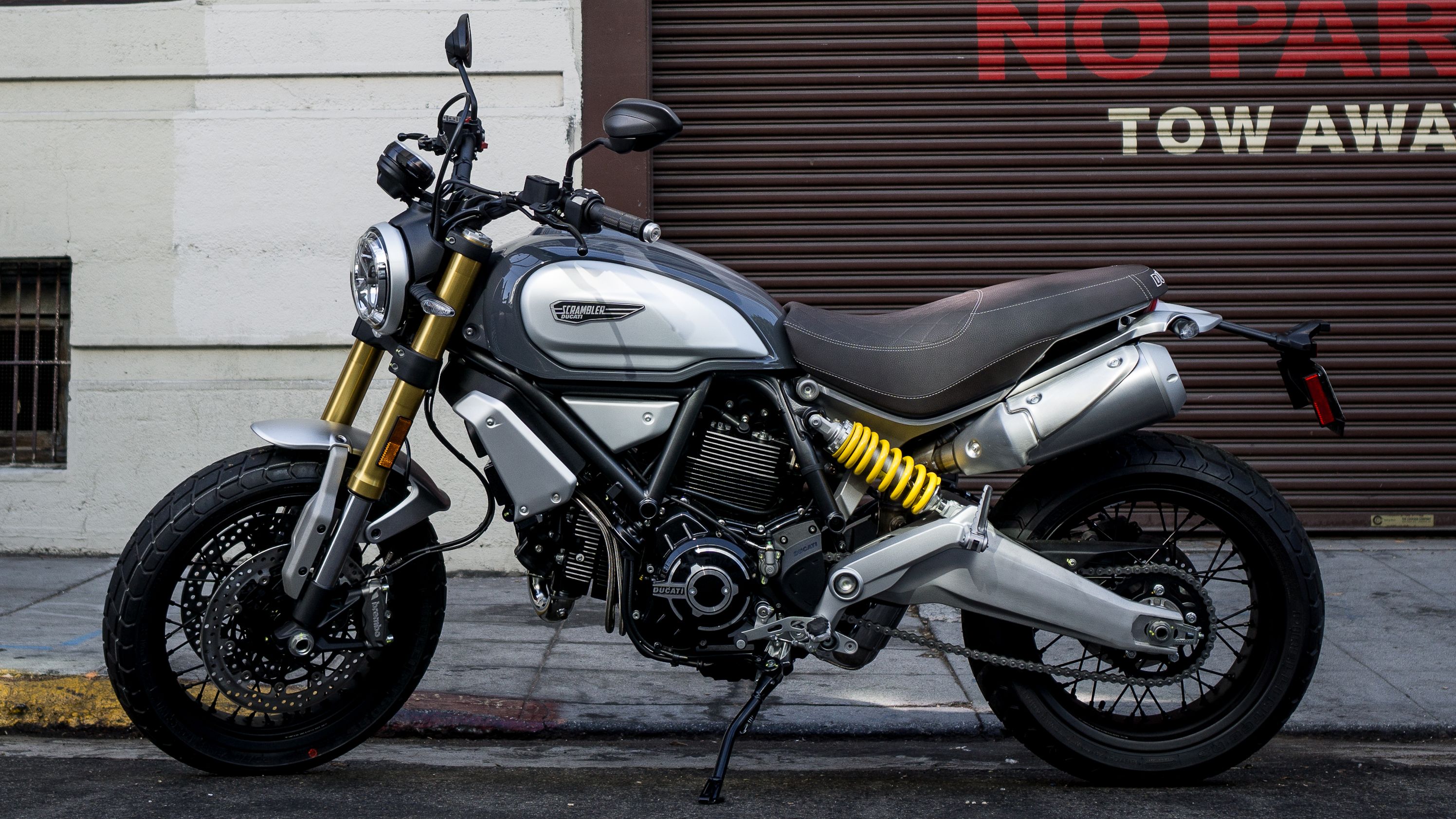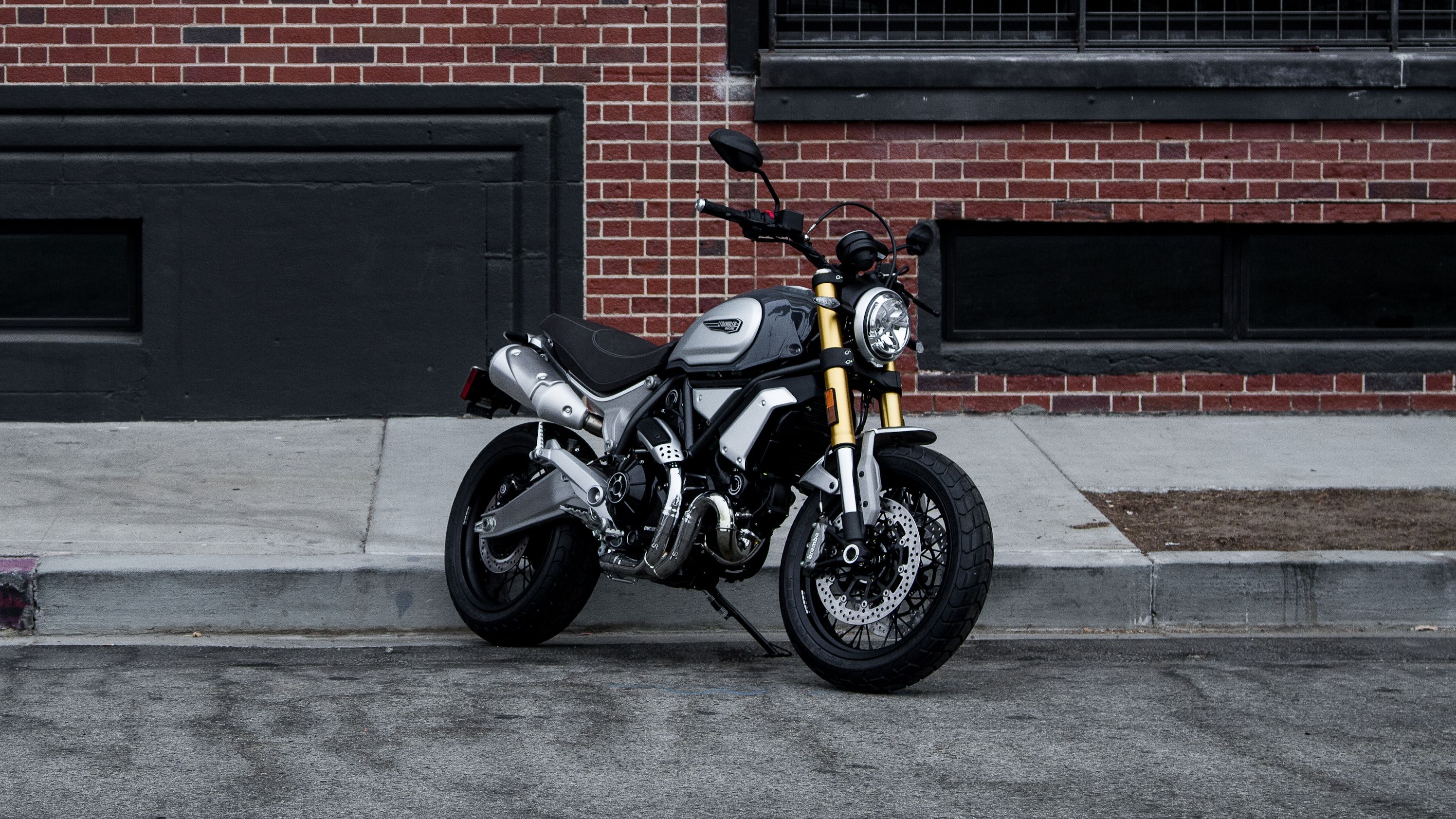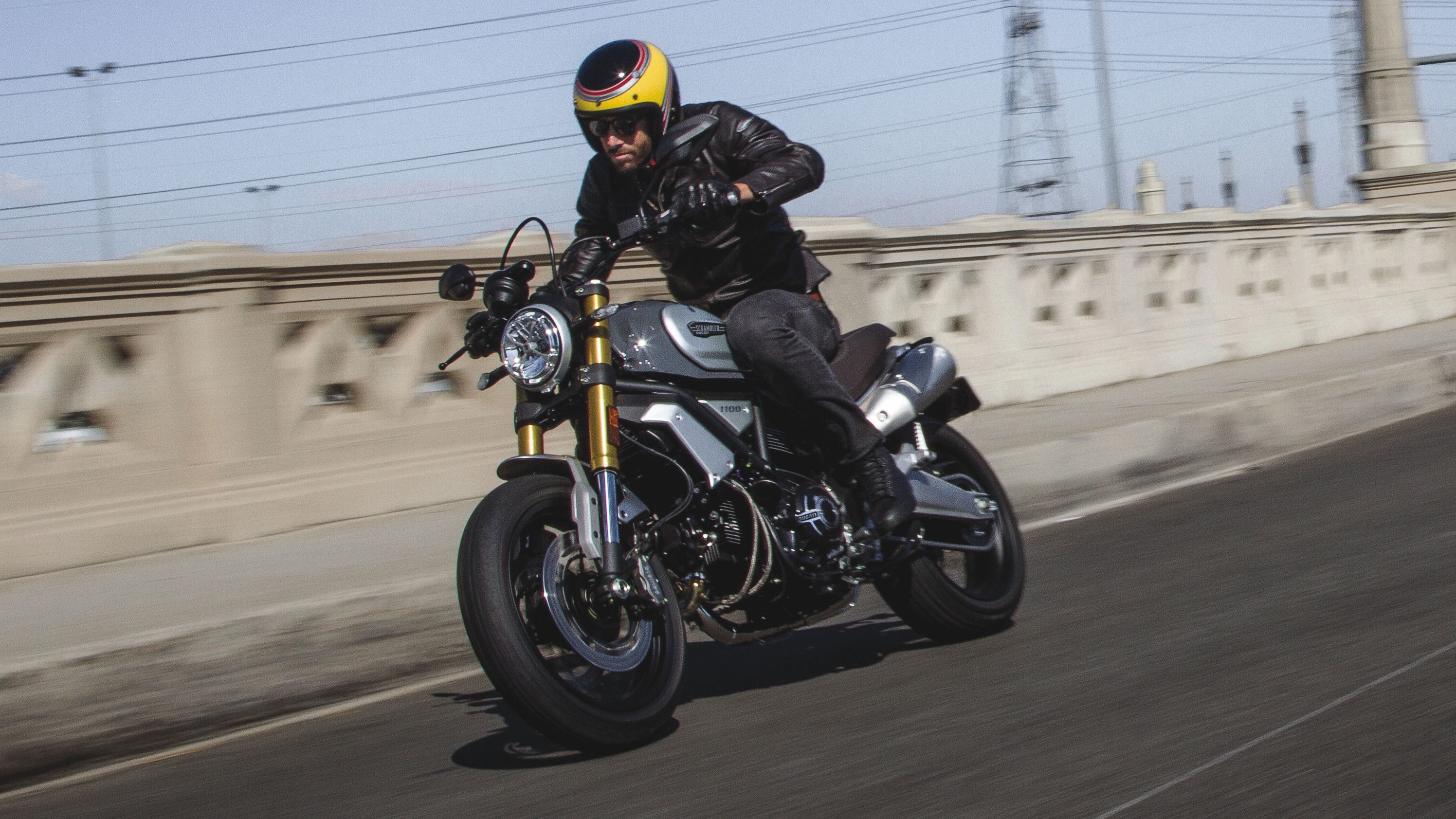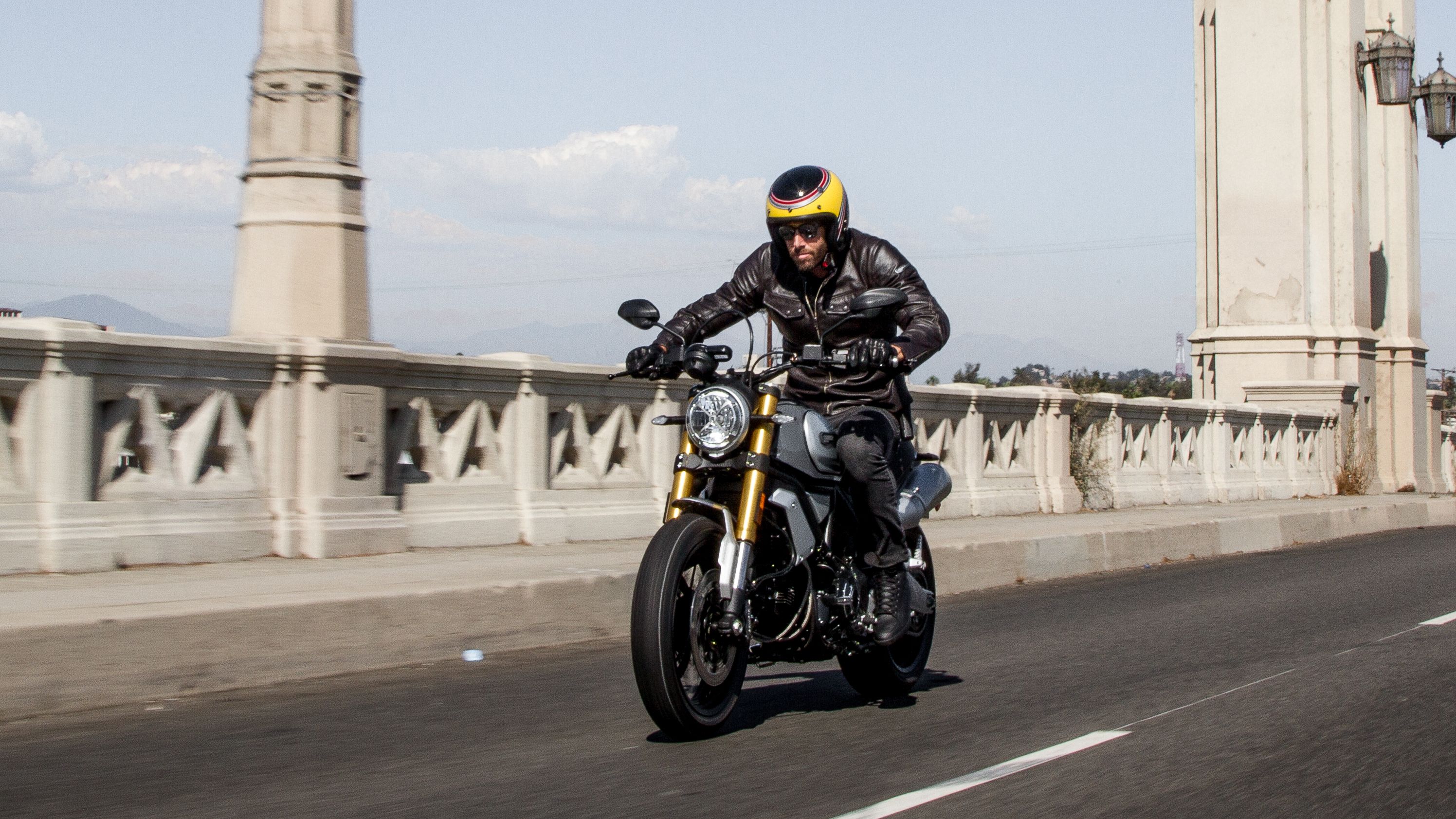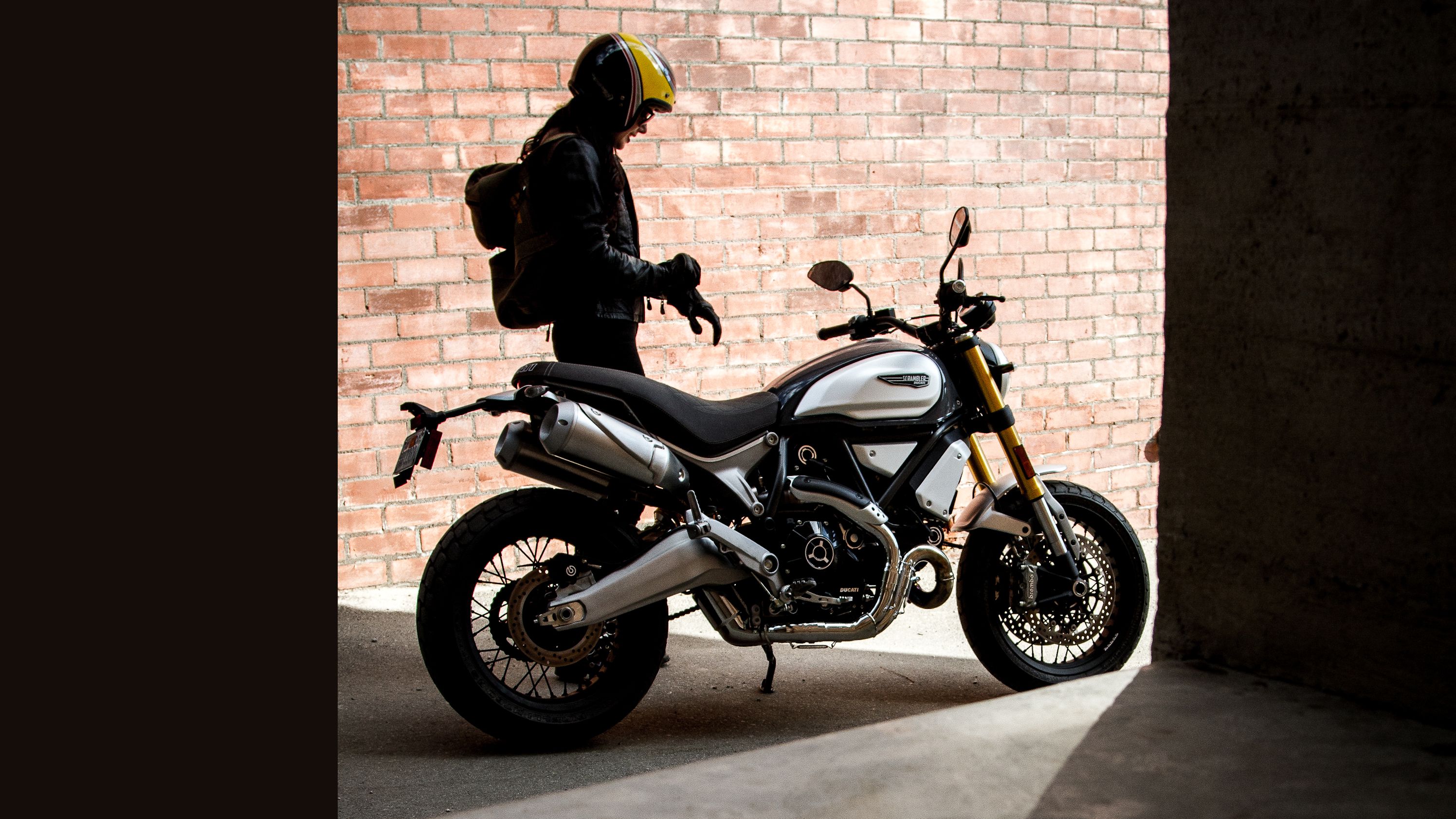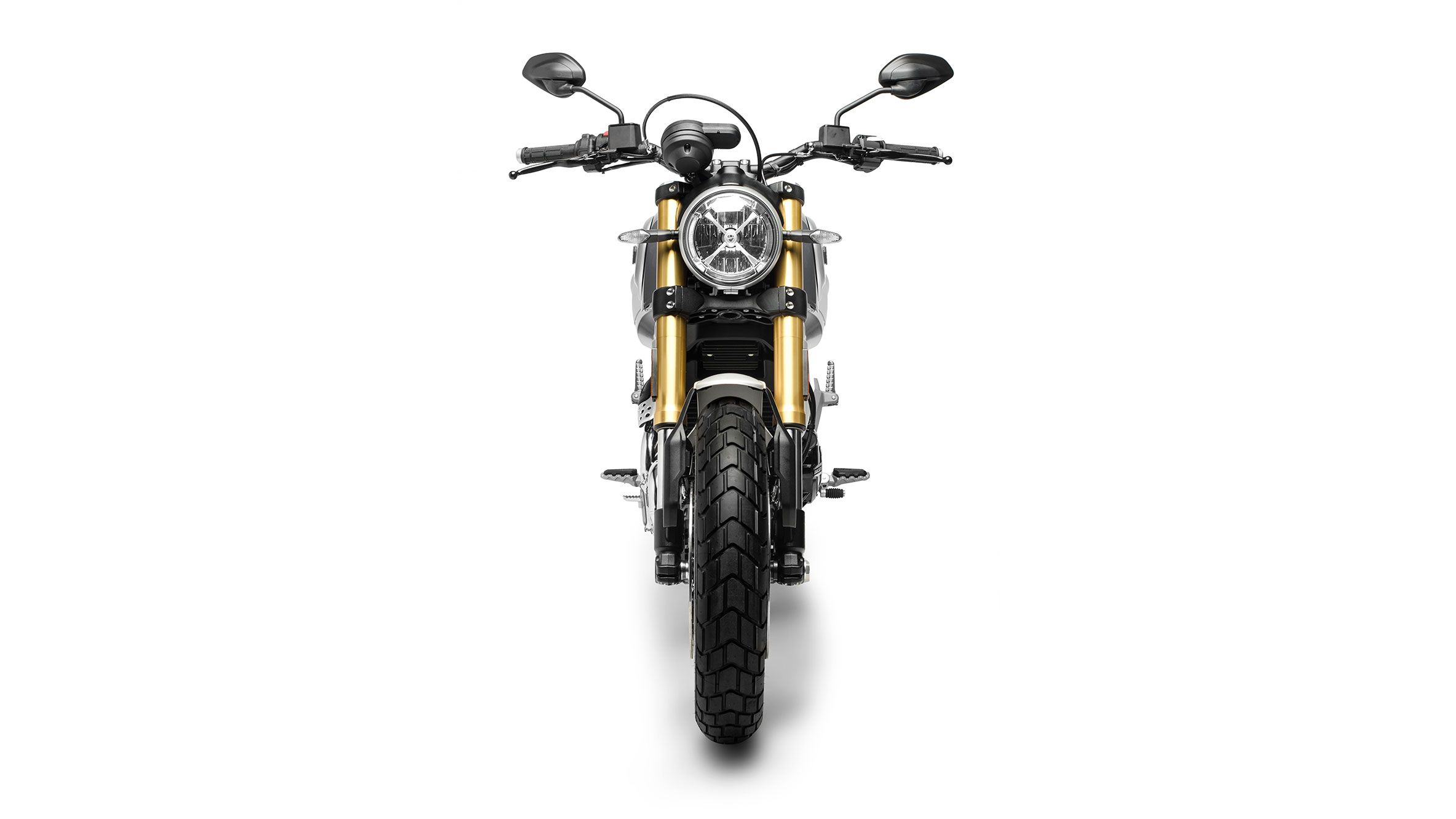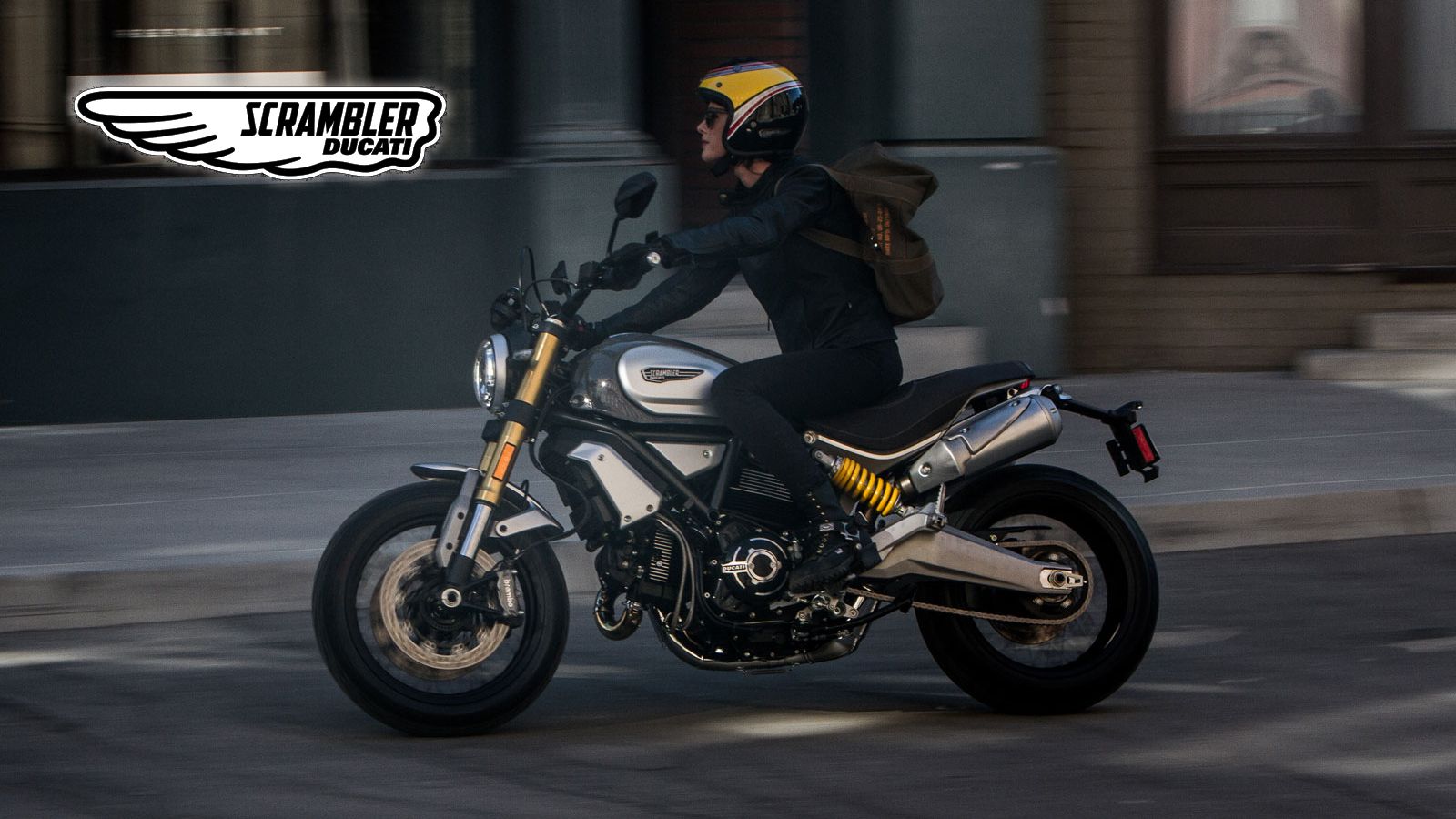There can be little doubt that Ducati's Scrambler line has been a success thus far, and after expanding the mid-displacement (803 cc) family downward last year with the 399 cc Sixty2, the factory decided to go the other direction with its Scrambler 1100 range. Larger, more powerful and arguably more mature, the 1100s bring to the table the same sassy style as their smaller siblings along with 86 grin-inducing ponies and an electronics suite (riding modes, TC, ABS) commensurate with its greater capabilities. In short, the Scrambler line is all growed up now and ready to swim in the deep end; or is it. Let's investigate this new branch on the Scrambler family tree and judge for ourselves.
Continue reading for my look at the Ducati Scrambler 1100 and Scrambler 100 Special.
2018 Ducati Scrambler 1100
- Make: Array
- Model: 2018 Ducati Scrambler 1100
- Engine/Motor: L-Twin
- [do not use] Vehicle Model: Array
Design
Why is this larger design a gamble? Well, it's like this; the original scramblers were custom-made in garages and backyards. They were, essentially, standard UJMs with off-road tires and were blank canvasses for customizers. But, at the end of the day, they were just big-boy toys and little more than homespun enduros.
Fast-forward to modern times and we find Ducati taking the scrambler concept to the bank with small- to mid-sized powerplants and rather sophomoric equipment choices, which is fine for the entry-level and younger riders. By boosting size, power, displacement and price, Ducati pushes beyond the basic beach cruiser and barhopper to bring some tech and class to what has traditionally been a rather low-tech genre. My question is; how much demand will there be for such a ride? Has the factory gone a bridge too far in trying to milk all it can from its bombshell Scrambler line? Time will tell.
Fancy bits aside, the overall look remains relatively faithful to the rest of the family. You can easily see the UJM roots in the stance and rider's triangle with a low jockey footpeg and moderate rise in the handlebar that forms a natural riding position that will feel compact to most but may feel a bit cramped to riders who shop in the Big-N-Tall section. Yeah, it may be beefier than its siblings with a bigger engine, but it's still sitting in the mid-range at best.
A round headlight can makes a visual connection to the old-school scramblers, but that is only skin deep since the illumination comes from a set of modern LED projectors. Since the ignition switch comes set in the center-top of the headlight, the all-digital instrument cluster comprised of a round face and an oval bar is mounted off-center; both odd and cool. Visually, the fuel tank cover suggests a much larger capacity than the smaller-displacement Scramblers, but the 3.96-gallon capacity is only marginally greater across the board.
Moving aft, the faux tuck-and-roll bench seat toes the family line, as does the tucked-under taillight and mudguard/plateholder extension that completes the rear coverage where the subframe falls stylishly short. The swoop-a-doop of the exhaust pipes adds an artistic flair to an otherwise mundane component, as do the twin silencers where they come up just under and to the side of the subframe so they stay clear of, well, just about everything. So relax, dear Scrambler fans, Ducati stayed faithful to its original design, and the new 1100 family will be instantly recognizable to fans of the brand.
Chassis
Like the rest of the family, the 1100s use a tubular-steel Trellis frame as the main structure, with a gull-wing/boomerang swingarm to articulate the rear wheel. Not only does this provide the stiffness necessary for the Scrambler's rambunctious riding style, but it adds something to the overall aesthetic, at least to mine eyes.
The sharp handling characteristics come courtesy of the 24.5-degree steering head and 4.4 inches of trail on a 59.6-inch wheelbase. Both the base-model 1100 and the Special roll on an 18-inch hoop up front with a 17 in back, but while the base uses cast-alloy wheels, the custom bent of the Special has it on a set of classy laced rims that really sets it off for me. Not only do wired rims look better, they actually perform better than mags do once the blacktop turns to beach/trail/whatever so they are a win-win all the way 'round.
Marzocchi provides the inverted, fully-adjustable 45 mm front forks, and the rear monoshock comes from Kayaba with the obligatory preload adjustment plus variable rebound damping. This is a significant improvement over the smaller Scramblers in ride quality and control, at least as far as the front end is concerned. Suspension travel measures at 5.7-inches long at both ends to give the pair a capacity to tackle at least light terrain.
Dual, 320 mm discs and four-pot, Brembo Monobloc calipers slow the front with a 245 mm disc and single-piston caliper out back. Yeah, that's a lot of brakes for off-road work, but the Cornering ABS feature helps prevent loss of traction due to overbraking and/or poor surfaces, and it takes into account the traction-sharing that occurs between the brakes and the lateral forces encountered in the corners.
|
Frame: |
Tubular steel Trellis frame |
|
Front suspension: |
Marzocchi fully adjustable Ø45 mm usd fork |
|
Front wheel travel: |
150 mm (5.9 in) |
|
Front wheel: |
Spoked aluminum wheel, 3.50" x 18" |
|
Front tire: |
Pirelli MT 60 RS 120/70 ZR18 |
|
Rear suspension: |
Kayaba monoshock, pre-load and rebound adjustable |
|
Rear wheel travel: |
150 mm (5.9 in) |
|
Rear wheel: |
Spoked aluminum wheel, 5.50" x 17" |
|
Rear tire: |
Pirelli MT 60 RS 180/55 ZR17 |
|
Front brake: |
2 x Ø320 mm semi-floating discs, radially mounted Brembo Monobloc M4.32 calipers, 4-piston, axial pump with Bosch Cornering ABS as standard equipment |
|
Rear brake: |
Ø245 mm disc, 1-piston floating caliper with Bosch Cornering ABS as standard equipment |
Drivetrain
The beating heart is an air-cooled, L-Twin powerplant that, much like the chassis, comes with a little lagniappe compared to its smaller siblings. Ducati's Traction Control system joins the Cornering ABS to complete the Safety Pack, and the RbW throttle control works with the Riding Modes and Power Modes features that make the 1100s suitable for a wide range of experience and capability. Need all the safety nets? Ducati has you covered. Want to go full raw? You can do that, too.
The engine has 86 ponies on tap at the 7,500 rpm mark with 65 pound-feet of torque at 4,750 rpm; plenty of power when you decide to get jiggy with it. And why not? The electronics ensure that you won't get in over your head (within reason, individual results may vary). Oversquare, the plant runs with a 98 mm bore and 71 mm stroke with an 11-to-1 compression ratio that, while only moderately high, will still prefer the higher octane ratings. As always, Ducati's signature Desmodromic valvetrain is on the job timing the two-valve heads through the use of a push-open/pull-closed cam system that eliminates valve springs and the harmonics and valve float associated with them.
|
Engine: |
L-Twin, Desmodromic distribution, 2 valves per cylinder, air cooled |
|
Displacement: |
1,079 cc |
|
Bore x stroke: |
98 x 71 mm |
|
Compression ratio: |
11:1 |
|
Power: |
63 kW (86 hp) @ 7,500 rpm |
|
Torque: |
88 Nm (65 lb-ft, 9.0 kgm) @ 4,750 rpm |
|
Fuel injection: |
Electronic fuel injection, Ø55 mm throttle body with full Ride by Wire (RbW) |
|
Exhaust: |
2-1-2 system with catalytic converter and 2 lambda probes, twin stainless steel muffler with aluminum covers and end caps |
|
Gearbox: |
6-speed |
|
Ratio: |
1=37/15 2=30/17 3=28/20 4=26/22 5=24/23 6=23/24 |
|
Primary drive: |
Straight cut gears; Ratio 1.85:1 |
|
Final drive: |
Chain; Front sprocket 15; Rear sprocket 39 |
|
Clutch: |
Light action, wet, multiplate clutch with hydraulic control. Self-servo action on drive, slipper action on over-run |
Price
MSRP on the 2018 Scrambler 100 runs you just a skosh under $13k, while the 1100 Special adds an additional $1300 to the bill. The 1100 is available in Shining Black and something Ducati calls '62 Yellow. The Special comes in Custom Grey. That's grey with an “e” not an “a” because, you know, Europe.
|
Warranty: |
24 months unlimited mileage |
|
Colors: |
|
|
1100: |
'62 Yellow, Shining Black |
|
1100 Special: |
Custom Grey |
|
Price: |
|
|
1100 : |
$12,995 |
|
1100 Special : |
$14,295 |
Competitor
Seems like everyone is jumping on the scrambler bandwagon to some degree or another, and one of my favorites is the Star Bolt-based SCR950 from Yamaha. The SCR is a product of Yamaha's “Faster Sons” initiative, and it represents a very definite effort to recapture that classic UJM scrambler appeal. To that end, the SCR sports laced wheels and fork bellows with liberal amounts of blackout throughout the whole bike with an old-school, peanut/teardrop tank and a bench seat to finish off the flylines.
It's cute, but that's just it, cute in much the same way as Ducati's smaller scramblers are cute. Side-by-side, Ducati comes off looking much more mature, and likely to appeal to a slightly-older young buyer for more reasons than just its looks. Ducati's advantages become even clearer in the suspension. Yamaha's SCR is pure-D vanilla with no answer for Duc's adjustable struts, and no ABS protection either.
One thing Yammie got right was the shape of the engine -- that 942 cc V-twin looks nice tucked away in there -- but with only 49 ponies at the rear wheel, it leaves the SCR a little lacking, to be kind; not just in power, but in the electronic/technomancy department as well. Is that necessarily a bad thing?
Well, the Yammie will be easier and simpler (read: less expensive) to maintain, and most likely, easier to work on in the driveway if needs be, but herein lies the difference between these two bikes. The Ducati is for a customer base that is willing to pay for something beyond basic transportation, even if the bike itself really is basic transportation. It's built around the idea of a Millennial customer base that's looking for something a little more substantial and capable, but with that look we all know and love. Was it fair to pick on the SCR? Maybe not, but this is the world it has to work in now. For the record, most other scramblers currently on the market will fare just as poorly against the Duc.
He Said
“I like it, but as I've made clear, I'm not sure there's a market for this bike. To be fair, markets are created every day, and all it takes is a good product to push the door open, but I can't help but feel that someone who has outgrown a smaller scrambler is liable to look at one of the less-niche genres come upgrade time. As always, I'll be watching to see how this plays out. (Grabs popcorn.)”
She Said
My wife and fellow motorcycle writer, Allyn Hinton, says, “This bike is a little roomier than the previous Scramblers so if you tried Ducati's Scramblers before and you felt a little cramped, take another look at this new 1100 family. The saddle is also a little bit bigger so there is more derrière support. Yes, it is a little expensive, but for all the beefiness and techno-goodness packed in, maybe the extra cheddar is justified. The engine is a retooled version of the old Monster 1100 mill, so there's that. I like the larger speedometer display on the oval panel. I have a hard enough time reading digital displays at-a-glance, but making the numbers bigger is at least a help.”
Specifications
|
Engine & Drivetrain: |
|
|
Engine: |
L-Twin, Desmodromic distribution, 2 valves per cylinder, air cooled |
|
Displacement: |
1,079 cc |
|
Bore x stroke: |
98 x 71 mm |
|
Compression ratio: |
11:1 |
|
Power: |
63 kW (86 hp) @ 7,500 rpm |
|
Torque: |
88 Nm (65 lb-ft, 9.0 kgm) @ 4,750 rpm |
|
Fuel injection: |
Electronic fuel injection, Ø55 mm throttle body with full Ride by Wire (RbW) |
|
Exhaust: |
2-1-2 system with catalytic converter and 2 lambda probes, twin stainless steel muffler with aluminum covers and end caps |
|
Gearbox: |
6 speed |
|
Ratio: |
1=37/15 2=30/17 3=28/20 4=26/22 5=24/23 6=23/24 |
|
Primary drive: |
Straight cut gears; Ratio 1.85:1 |
|
Final drive: |
Chain; Front sprocket 15; Rear sprocket 39 |
|
Clutch: |
Light action, wet, multiplate clutch with hydraulic control. Self-servo action on drive, slipper action on over-run |
|
Chassis: |
|
|
Frame: |
Tubular steel Trellis frame |
|
Front suspension: |
Marzocchi fully adjustable Ø45 mm usd fork |
|
Front wheel travel: |
150 mm (5.9 in) |
|
Front wheel: |
Spoked aluminum wheel, 3.50" x 18" |
|
Front tire: |
Pirelli MT 60 RS 120/70 ZR18 |
|
Rear suspension: |
Kayaba monoshock, pre-load and rebound adjustable |
|
Rear wheel travel: |
150 mm (5.9 in) |
|
Rear wheel: |
Spoked aluminum wheel, 5.50" x 17" |
|
Rear tire: |
Pirelli MT 60 RS 180/55 ZR17 |
|
Front brake: |
2 x Ø320 mm semi-floating discs, radially mounted Brembo Monobloc M4.32 calipers, 4-piston, axial pump with Bosch Cornering ABS as standard equipment |
|
Rear brake: |
Ø245 mm disc, 1-piston floating caliper with Bosch Cornering ABS as standard equipment |
|
Dimensions & Capacities: |
|
|
Wheelbase: |
1,514 mm (59.6 in) |
|
Rake: |
24.5° |
|
Trail: |
111 mm (4.4 in) |
|
Total steering lock: |
34° |
|
Fuel tank capacity: |
15 l - (3.96 US gal) |
|
Dry weight: |
1100: 189 kg (417 lb), 1100 Special: 194 kg (428 lb) |
|
Wet weight*: |
1100: 206 kg (454 lb), 1100 Special: 211 kg (465 lb) |
|
Seat height: |
810 mm (31.9 in) |
|
Max height: |
1100: 1,330 952.4 in), 1100 Special: 1,290 mm (50.7 in) |
|
Max width: |
1100: 895 mm (35.2 in ), 1100 Special: 920 mm (36.2 in) |
|
Max length: |
2,190 mm (86.0 in) |
|
Number of seats: |
Dual seat |
|
Details: |
|
|
Standard equipment: |
Riding Modes, Power Modes, Ducati Safety Pack (Cornering ABS + DTC), RbW, LED light-guide, LED rear light with diffusion-light, LCD instruments with gear and fuel level indications, Steel tank with interchangeable aluminum side panels, Machine-finished aluminum belt covers, Under-seat storage compartment with USB socket |
|
Special equipment: |
Low handlebar, Front and rear aluminum mudguards, Chromed exhaust pipes, Black spoked wheels, Anodized aluminum fuel tank side covers, Double swingarm with brushed surface finishing, Dedicated seat fabric |
|
Warranty: |
24 months unlimited mileage |
|
Colors: |
|
|
1100: |
'62 Yellow, Shining Black |
|
1100 Special: |
Custom Grey |
|
Price: |
|
|
1100 : |
$12,995 |
|
1100 Special : |
$14,295 |
References
Yamaha SCR950
See our review of the Yamaha SCR950.
Ducati Scrambler
See our review of the Ducati Scrambler.

